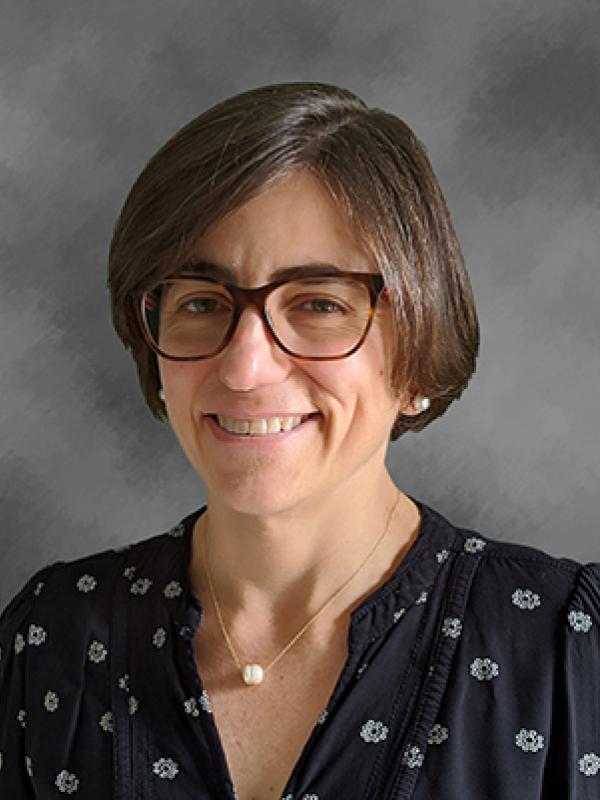
Natividad Ruiz
Professor of Microbiology, Vice Chair for Teaching and Undergraduate Affairs
264 Aronoff Building
318 W 12th Ave,
Columbus, OH 43210
Areas of Expertise
- Envelope biogenesis in Gram-negative bacteria
- Bacterial Genetics
Education
- B.A. University of Kansas, 1993
- Ph.D. Washington University, St. Louis, 1998
- Postdoc, Princeton University, 1998-2006
- Research Scientist, Princeton University, 2006-2010
Affiliations
Awards
- Fellow, American Association for the Advancement of Science, 2023
- Fellow, American Academy of Microbiology, 2021
- College of Arts and Sciences Honors Faculty Service Award, 2021

Research Interests
The bacterial cell envelope mediates interactions with the outside world, provides cellular integrity, and serves as a protective permeability barrier. In the Ruiz laboratory, we use Escherichia coli to understand how Gram-negative bacteria build their multilayered envelope. The Gram-negative cell envelope is composed of two membranes (the inner and outer membranes), an aqueous compartment that separates them (the periplasm), and a cell wall composed of peptidoglycan.
Properly building the cell envelope is critical for bacteria to grow and thrive. Envelope biogenesis requires the coordinated synthesis, transport, and assembly of all its components. In our laboratory, we use genetic and biochemical approaches to study molecular machines that transport envelope components from their site of synthesis to where they function. Since we opened our doors in 2010, our laboratory has investigated how the MurJ protein translocates the lipid-linked peptidoglycan precursor (Lipid II) across cytoplasm membrane and how Gram-negative bacteria transport lipids from the inner to the outer membrane.
Outer Membrane Biogenesis
Most Gram-negative bacteria are resistant to many antibiotics and detergents because of the permeability barrier imposed by outer membrane. This lipid bilayer is highly asymmetric: its outer leaflet is mostly composed of a large glycolipid known as LPS and its inner leaflet is composed of phospholipids. The structure and tight packing of LPS molecules at the cell surface allows this glycolipid to form a protective permeability barrier against many toxic molecules present in the environment.
LPS is synthesized in the inner membrane and transported to the cell surface. Transport of LPS across the cell envelope is a complex process that is required for cell growth. It is mediated by the Lpt trans-envelope complex, which is a multi-protein complex that bridges the inner and outer membranes. Our laboratory investigates how the Lpt machine functions.
Like LPS, phospholipids are also synthesized in the inner membrane, but their transport to the outer membrane has remained mysterious for decades. We recently proposed that the proteins YhdP, TamB, and YdbH, which are functionally redundant, transport phospholipids from the inner to the outer membrane. These proteins, which belong to the AsmA-like protein family, are predicted to have a structure that resembles that of the Lpt bridge and be the ancestors of bridge-like proteins that transport lipids between organelles in eukaryotic cells. Our laboratory seeks to understand how AsmA-like proteins function.
Curriculum Vitae
Relevant Publications
Kumar, S., Davis, R.M., and Ruiz, N. (2024). YdbH and YnbE form an intermembrane bridge to maintain lipid homeostasis in the outer membrane of Escherichia coli. Proc Natl Acad Sci U S A. 121(21):e2321512121. PMID: 38748582
Kumar, S., and Ruiz, N. (2023). Bacterial AsmA-like proteins: bridging the gap in intermembrane phospholipid transport. Contact 6. doi:10.1177/25152564231185931. PMID: 37455811.
Wilson, A. and Ruiz, N. (2022). The transmembrane α-helix of LptC participates in LPS extraction by the LptB2FGC transporter. Mol Microbiol 118 (1-2): 61-76. PMID: 35678757.
Kumar, S., Mollo, A., Kahne, D., Ruiz, N. (2022). The Bacterial Cell Wall: From Lipid II Flipping to Polymerization. Chem Rev 122:8884-8910. PMID: 35274942.
Ruiz, N*., Davis, R.M., Kumar, S. (2021). YhdP, TamB, and YdbH are redundant but essential for growth and lipid homeostasis of the Gram-negative outer membrane. mBio 12(6): e0271421. PMID: 34781743.
Lundstedt, E.A, Simpson, B.W., Ruiz, N. (2021). Lipopolysaccharide transport involves long-range coupling between cytoplasmic and periplasmic domains of the LptB2FGC extractor. J Bacteriol 203: e00618-20. PMID: 33361195.
Lundstedt, E.A, Kahne, D., Ruiz, N. (2020). Assembly and maintenance of lipids at the bacterial outer membrane. Chem Rev. doi: 10.1021/acs.chemrev.0c00587 (in press). PMID: 32955879.
Lundstedt, E.A, Simpson, B.W., Ruiz, N. (2020). LptB-LptF coupling mediates closure of the substrate-binding cavity in the LptB2FGC transporter through a rigid-body mechanism to extract LPS. Mol Microbiol. doi: 10.1111/mmi.14506. PMID: 32236984.
Simpson, B.W., Pahil, K.S., Owens, T.W., Lundstedt, E.A., Davis, R.M., Kahne, D., Ruiz, N. (2019). Combining mutations that inhibit two distinct steps of the ATP hydrolysis cycle restores wild-type function in the lipopolysaccharide transporter and shows that ATP binding triggers transport. mBio (4): e01931-19. doi: 10.1128/mBio.01931-19. PMID: 31431556.
Owens, T.W., Taylor, R.J., Pahil, K.S., Bertani, B.R., Ruiz, N.*, Kruse, A.C.*, Kahne, D.* (2019) Structural basis of unidirectional export of lipopolysaccharide to the cell surface. Nature 567:550-553. PMID: 30894747.
Kumar, S., Rubino F.A., Mendoza, A.G., Ruiz, N. (2019) The bacterial lipid II flippase MurJ functions by an alternating-access mechanism. J Biol Chem 294(3):981-990. PMID: 30482840.
Sham, L. T., Butler, E. K., Lebar, M. D., Kahne, D., Bernhardt, T.G.*, and Ruiz, N.* (2014) MurJ is the flippase of lipid-linked precursors for peptidoglycan biogenesis. Science 345:220-222. PMID: 25013077.
